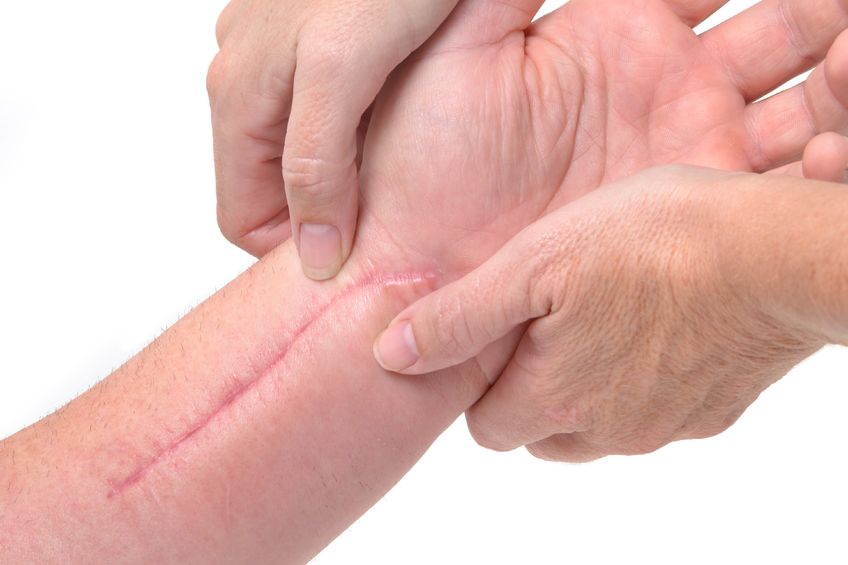 When a person experiences an accident or injury to the soft tissues, scar tissue can develop. Unlike healthy tissues like tendons and ligaments (which are dense, elongated fibers running toward the same direction) and other tissue types (that can be dense, loose and irregular, with some fibers going multiple directions), scar tissue is healthy tissue that healed in a haphazard fashion after the damage. This scarring means that the tissues are not formed the way they are supposed to, and the person’s range of motion has now become painful and limited.
When a person experiences an accident or injury to the soft tissues, scar tissue can develop. Unlike healthy tissues like tendons and ligaments (which are dense, elongated fibers running toward the same direction) and other tissue types (that can be dense, loose and irregular, with some fibers going multiple directions), scar tissue is healthy tissue that healed in a haphazard fashion after the damage. This scarring means that the tissues are not formed the way they are supposed to, and the person’s range of motion has now become painful and limited.
One treatment method that has been developed specifically to assist soft tissue mobilization is the Graston Technique Midtown therapists share valuable information below that can help patients explore the treatment possibilities that can be derived from the technique.
What is it?
Using the works of English orthopedic surgeon Dr. James Cyriax on cross fiber massage as their foundation, the developers of the Graston Technique specially designed stainless steel instruments and protocols to help clinicians identify scar tissue, adhesion’s and deeper restrictions that prevent a person from moving and functioning normally.
How does it work?
Certified and trained therapists use the stainless steel instruments to comb over the affected body part — the instruments work to amplify touch, much like a stethoscope is able to amplify sound from inside the body. The instrument will cause the practitioner to feel a grittiness or bumpiness in an area with scar tissue or adhesion. The same instruments are then used to break up the adhesion or scar tissue so that it can be absorbed by the body.
The Graston Technique cannot be used on its own; protocols commonly call for the inclusion of brief warm-up exercises, and then the actual technique is performed. Afterwards, the patient is advised to practice some stretching and strengthening, and to use ice. The actual treatment lasts usually between three and six minutes, and patients can expect some minor discomfort and bruising as part of the healing process.
The Graston Technique involves the following:
- Separation and breakdown of collagen cross-links
- Stretching of muscle fibers and connective tissue
- Increased blood flow rate and amount to and from the affected area
- Increased histamine response (secondary to mast cell activity)
- Increased cellular activity to mast cells and fibroblasts
- Increased skin temperature
- Changes in reflex in chronic muscle holding patterns
Who can benefit from this technique?
The Graston Technique is widely used today by thousands of physical, occupational and hand therapists, sports trainers, chiropractors and other health specialists to facilitate healing among patients with the following conditions:
- Neck, knee and back pain
- Post fracture pain
- Carpal tunnel syndrome
- Fibromyalgia
- Plantar fasciitis
- Tennis and golfer’s elbow
- Shin splints
- Illiotibial band syndrome
- Rotator cuff tendinitis














